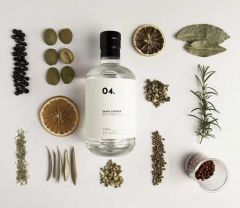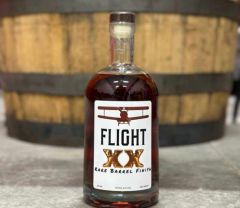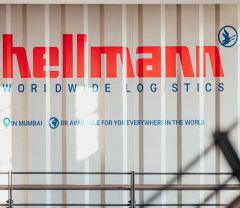Brazilian Wine Market Potential and Import procedures
The food and beverage industry is one of the key segments of the Brazilian economy, exceeding all other industry segments and accounting for more than 18% of gross national production.
The largest growth in imports in the period of 2007-2011 was seen in the beverage sector accounting for 374% in terms of value and 860% in terms of volume.
Brazil is the largest market for imported wines in Latin America. The consumption of the drink has increased significantly in recent years, thus giving the country a compelling potential for growth in this market.
According to the Instituto Brasileiro do Vinho (IBRAVIN) Index the wine imports in Brazil increased from 40.9 million liters to 75.3 millions liters between 2005 and 2010. The consequence: 300 importers and 30,000 labels from 32 countries available for Brazilian consumers.
Image Below: Symposium - Owned by the Uruguaian José Hodara and located in a heritage-protected mansion built from stone and whale blubber no less, Symposium is nothing short of a wine-lovers paradise
Didú Ruso, Coordinator of the Wine Committee of the Federation of Commerce in the State of Sao Pablo informed us that Brazil currently consumes two bottles of wine per year per capita and the number is expected to increase to eight bottles, which means approximately 30 million people consuming a bottle of wine per week. This is an estimated annual growth of 15% for imported wines.
Procedures and Regulations for Beverage Imports in Brazil
Wine, malt beverage and distilled spirits products are required to be accompanied by a combined Certificate of Origin and Analysis. Prior to exportation, the U.S. exporter is required to have each shipment of the product analyzed by a TTB certified laboratory. This will need to include the results of the analysis on the bottom “analysis” portion of the certificate.
The exporter or laboratory should then forward the certificate for TTB to complete the top “origin” portion of the form. TTB provides a Portuguese/English template of the certificate for wine and malt beverage and distilled spirits products. The analyses that Brazil requires for each type of product are specified within the templates above.
Import beverages to Brazil: Legislation
For Registration:
- Request form
- Copy of the Articles of Association
- Copy of Corporate Taxpayers Registry Number card
- Registration of Establishment Form
- Importer Declaration of Suitable Conditions for Product Storage
All beverages must follow the text of their respective Identity and Quality Standards (PIQ) which are determined by specific legislation. The PIQs define each one of the Ministry of Agriculture food categories and even determine specific quality and labeling criteria.
For Authorizations:
- Request for Agricultural Products Inspection
- Certificate of establishment importer registration
- Certificate of product origin and analysis
- Certificate of Aging Time, if applicable
- Inspection import certificate authorizing the marketing of the product during the period of sample collection and dispensing, if applicable.
- Responsibility Term when sample collection dispensed
- Request for non-commercial importing approved by the supervisory body, if applicable
- Proof of typicality and regionality of the product, if applicable
- Proof of geographical indication of the product, if applicable
- Customs Documentation of the goods
- Copy of Invoice
- Copy of Cargo Manifest or AWB
Obligatory Content on the Label
Key Information: Origin, denomination, when the grapes were harvested, producer and alcoholic strength.
- Product Denomination
- Product Commercial Trend
- The ingredients and the additives employed
- Product Registry Number in MAPA.
Licensing Import Procedures
The Brazilian importer is responsible for filing an application for an import license accompanied by a pro forma invoice from the foreign supplier (e.g. U.S exporter) for the products to be imported. This import license is required for all shipments, and must be obtained through an electronic system referred to as SISCOMEX.
Once the application is approved, the Brazilian importer must notify the U.S. exporter to ship the product and to transmit all shipment documents to the importer. They must then file an Import Declaration once the merchandise arrives at the final port and present all required documentation.
Importers must also pay Customs duties and other taxes (e.g. Industrial Tax (IPI), Merchandise Circulation Tax (ICMS) prior to the shipment being released.
In summary, according to a Rabobank resource Mexico, Brazil, Poland and Nigeria are the new large commercialization markets for wines. The study emphasizes the importance of entering these markets with good prospects. Even though these four countries do not yet represent the largest and most attractive markets for wine imports, they offer serious growth prospects in the long term.
Sources:
IBRAVIN (Instituto Brasilero do Vinho)
Rabobank
USDA Foreign Agricultural Service
Thebrazilbusiness.com
Related Articles on Brazilian Wine Market








